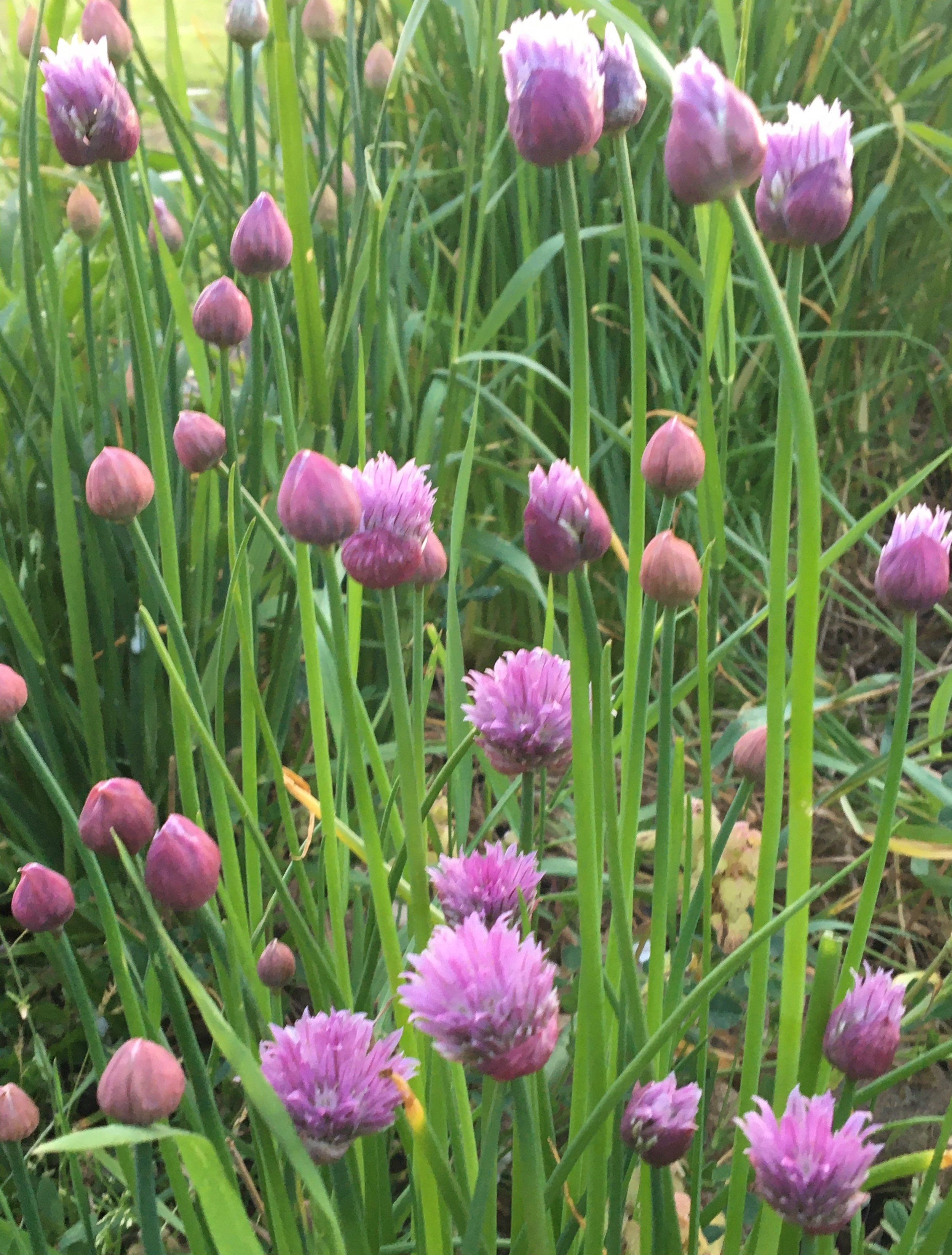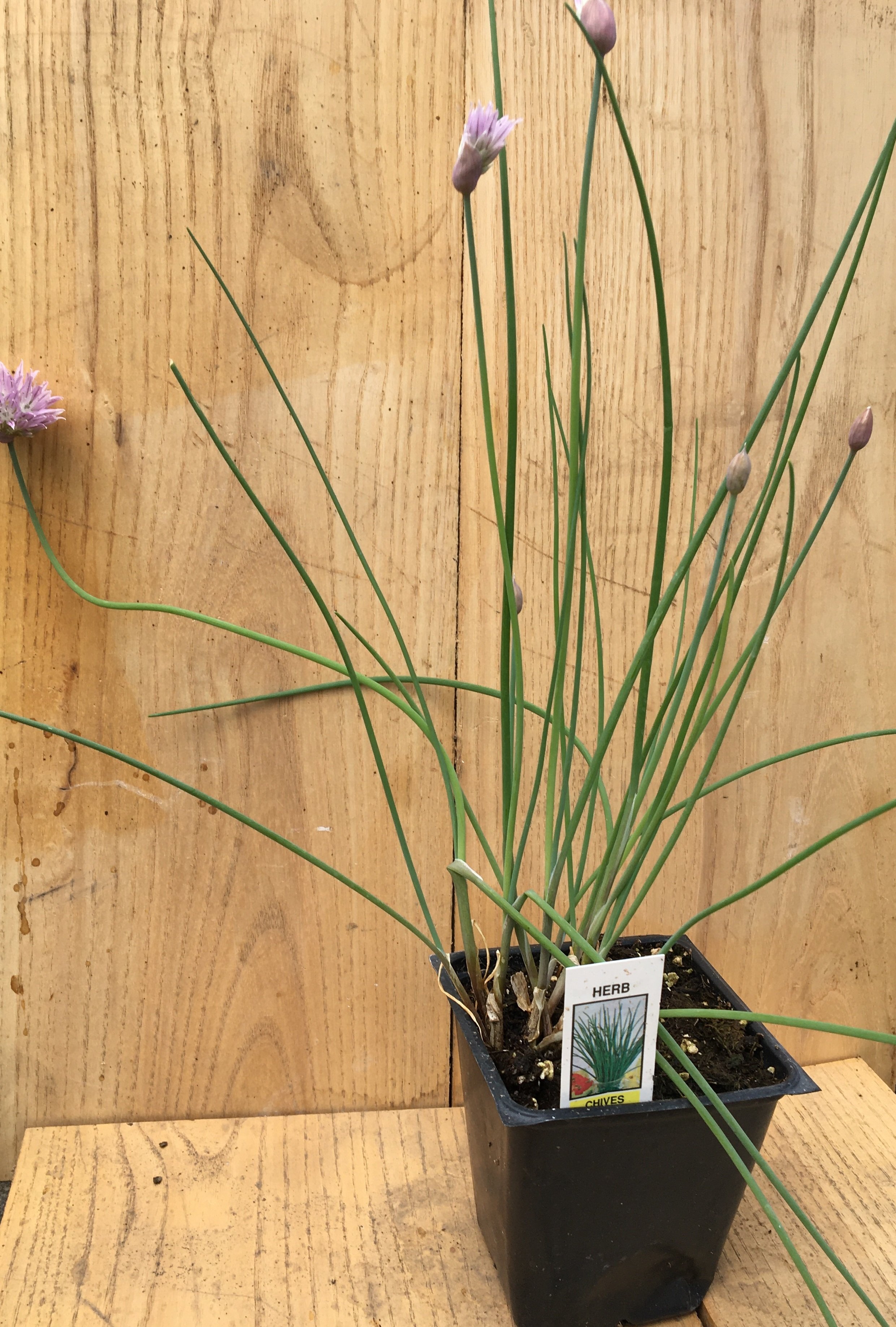 Image 1 of 2
Image 1 of 2

 Image 2 of 2
Image 2 of 2



Chives- Regular
Chives are cool-season, cold-tolerant perennials that produce flavorful leaves and flowers in Spring and Fall.
Great addition to potato dishes, including baked potatoes and potato salad, soups, casseroles and eggs. A family favorite is chives mixed with sour cream and added with our scrambled eggs for breakfast.
Since chives produce the most leaves in Spring and Fall and tend to go dormant during the winter months; I like to cut extra. I chop the leaves into small pieces and put them in a freezer container for later use. While I have not had good luck drying chive leaves, the blossoms do air dry quite nicely and add a bit of color and flavor to herb breads. Be mindful when planting this herb, as it will take over your garden if the flowers are allowed to develop fully (the flowers scatter the seeds). However, this plant is easy to dig up and move if it does end up invading other parts of your garden.
We have our chives planted in our landscaping. In June it blooms brightly colored pink blossoms. Every year someone always asks what the stunning plant is. I tell them it’s chives they are surprised it is so pretty for such a common herb.
Plants are grown in 4” pot
Chives are cool-season, cold-tolerant perennials that produce flavorful leaves and flowers in Spring and Fall.
Great addition to potato dishes, including baked potatoes and potato salad, soups, casseroles and eggs. A family favorite is chives mixed with sour cream and added with our scrambled eggs for breakfast.
Since chives produce the most leaves in Spring and Fall and tend to go dormant during the winter months; I like to cut extra. I chop the leaves into small pieces and put them in a freezer container for later use. While I have not had good luck drying chive leaves, the blossoms do air dry quite nicely and add a bit of color and flavor to herb breads. Be mindful when planting this herb, as it will take over your garden if the flowers are allowed to develop fully (the flowers scatter the seeds). However, this plant is easy to dig up and move if it does end up invading other parts of your garden.
We have our chives planted in our landscaping. In June it blooms brightly colored pink blossoms. Every year someone always asks what the stunning plant is. I tell them it’s chives they are surprised it is so pretty for such a common herb.
Plants are grown in 4” pot
Chives are cool-season, cold-tolerant perennials that produce flavorful leaves and flowers in Spring and Fall.
Great addition to potato dishes, including baked potatoes and potato salad, soups, casseroles and eggs. A family favorite is chives mixed with sour cream and added with our scrambled eggs for breakfast.
Since chives produce the most leaves in Spring and Fall and tend to go dormant during the winter months; I like to cut extra. I chop the leaves into small pieces and put them in a freezer container for later use. While I have not had good luck drying chive leaves, the blossoms do air dry quite nicely and add a bit of color and flavor to herb breads. Be mindful when planting this herb, as it will take over your garden if the flowers are allowed to develop fully (the flowers scatter the seeds). However, this plant is easy to dig up and move if it does end up invading other parts of your garden.
We have our chives planted in our landscaping. In June it blooms brightly colored pink blossoms. Every year someone always asks what the stunning plant is. I tell them it’s chives they are surprised it is so pretty for such a common herb.
Plants are grown in 4” pot